This Ahmedabad house is enclosed within a curved concrete shell
This Ahmedabad house by Achyutam Designs is a homage to concrete and a celebration of the curve, a family house designed to flow into its surroundings
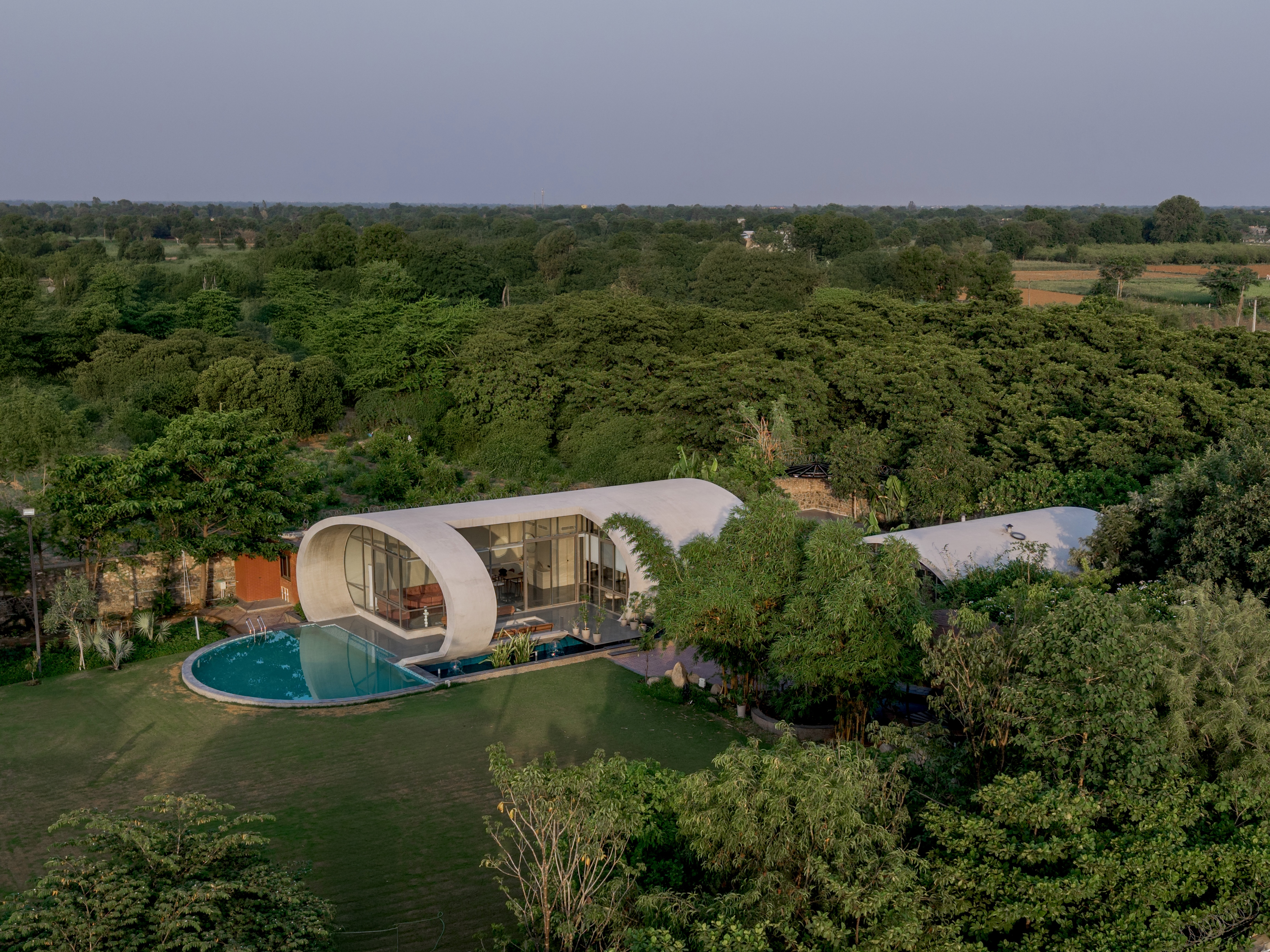
This Ahmedabad house by Shikha Parmar and Ashish Parmar of Achyutam Designs was designed as a new family home for a long-time client. Two structures, each apparently formed from a ribbon of concrete, sit adjacent to a pool and a generous landscaped garden, fulfilling the brief for ‘something different.’
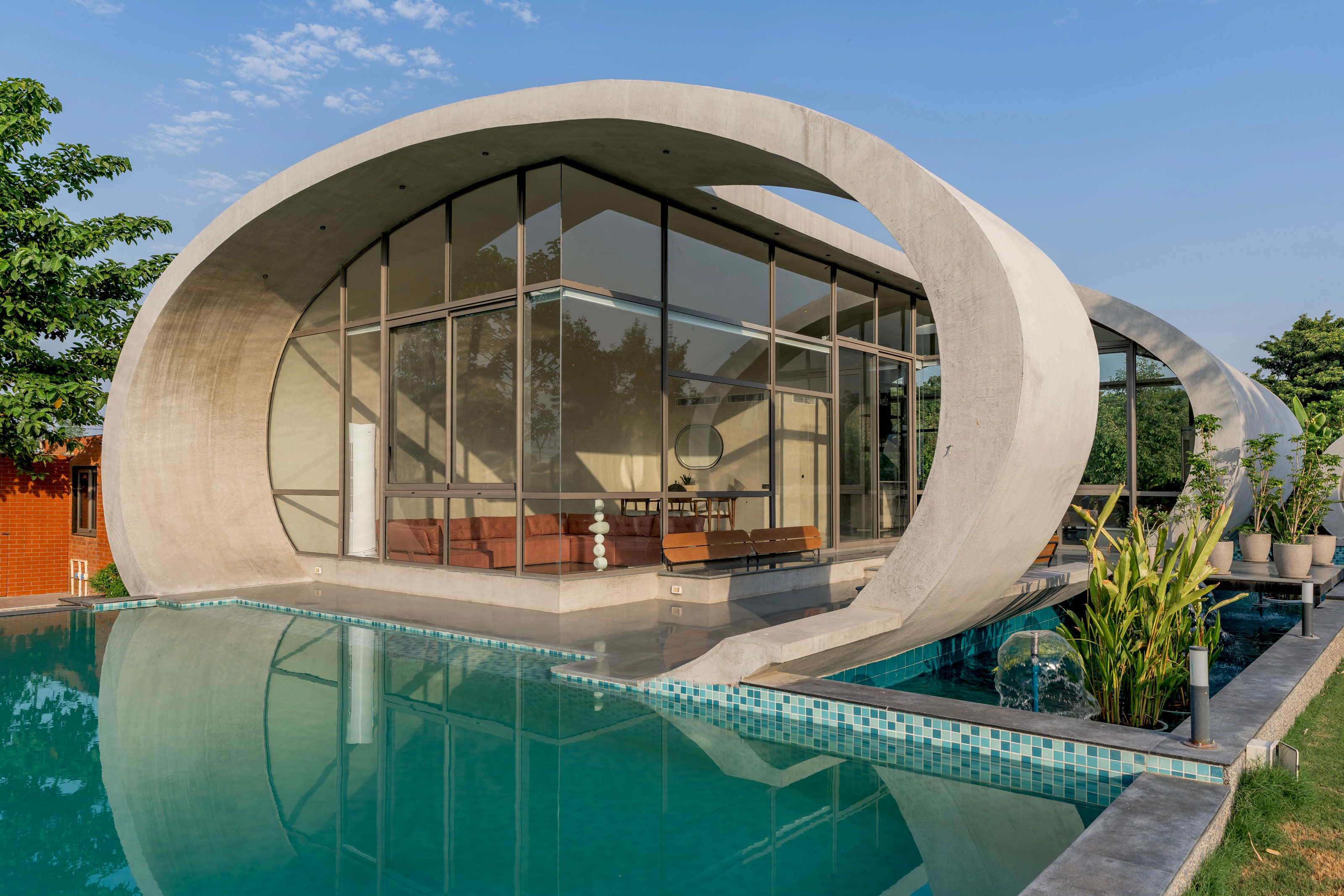
The house overlooks a pool
Explore this Ahmedabad house's concrete curves
Each shell in the aptly named Carapace House has a distinct function, with the larger structure given over to living, dining and relaxing, while the small houses two bedrooms. The ends of each concrete tube are fully glazed, with the use of reflecting pools and polished Kota stone floors ensuring that dappling and rippling sunlight is cast up and across the curved walls throughout the day.
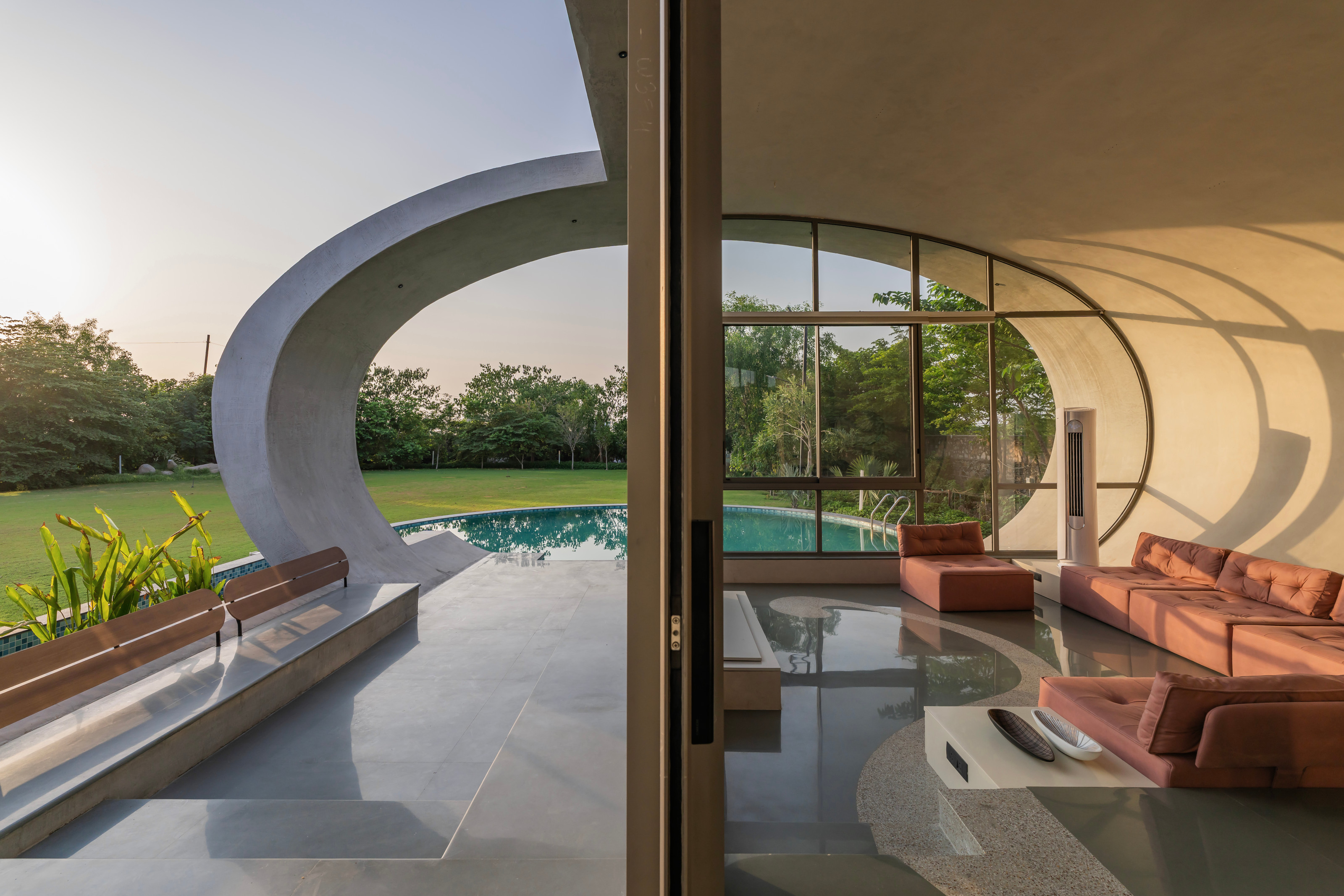
A path and reflecting pool run along the side of the main building
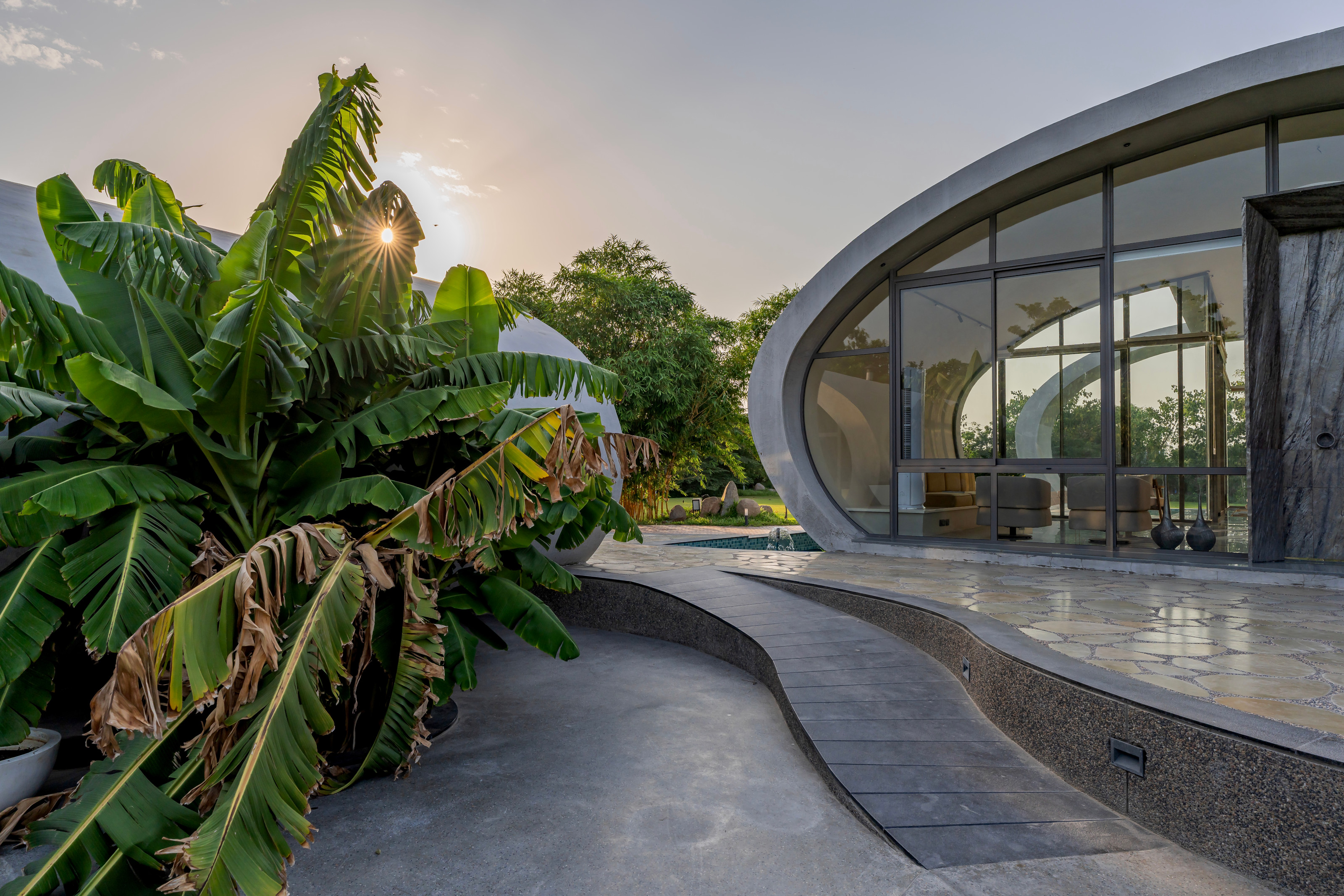
Walkways lead through the surrounding vegetation
Surrounded by terraces, lawns and walkways, in addition to that generous swimming pool, the Carapace House feels open to its surroundings, with vegetation serving as a backdrop to practically every room. The idea of a house embedded in nature is emphasised by the entrance procession, which keeps car parking away from the structures and reveals them via a walkway that meanders through mature indigenous planting.
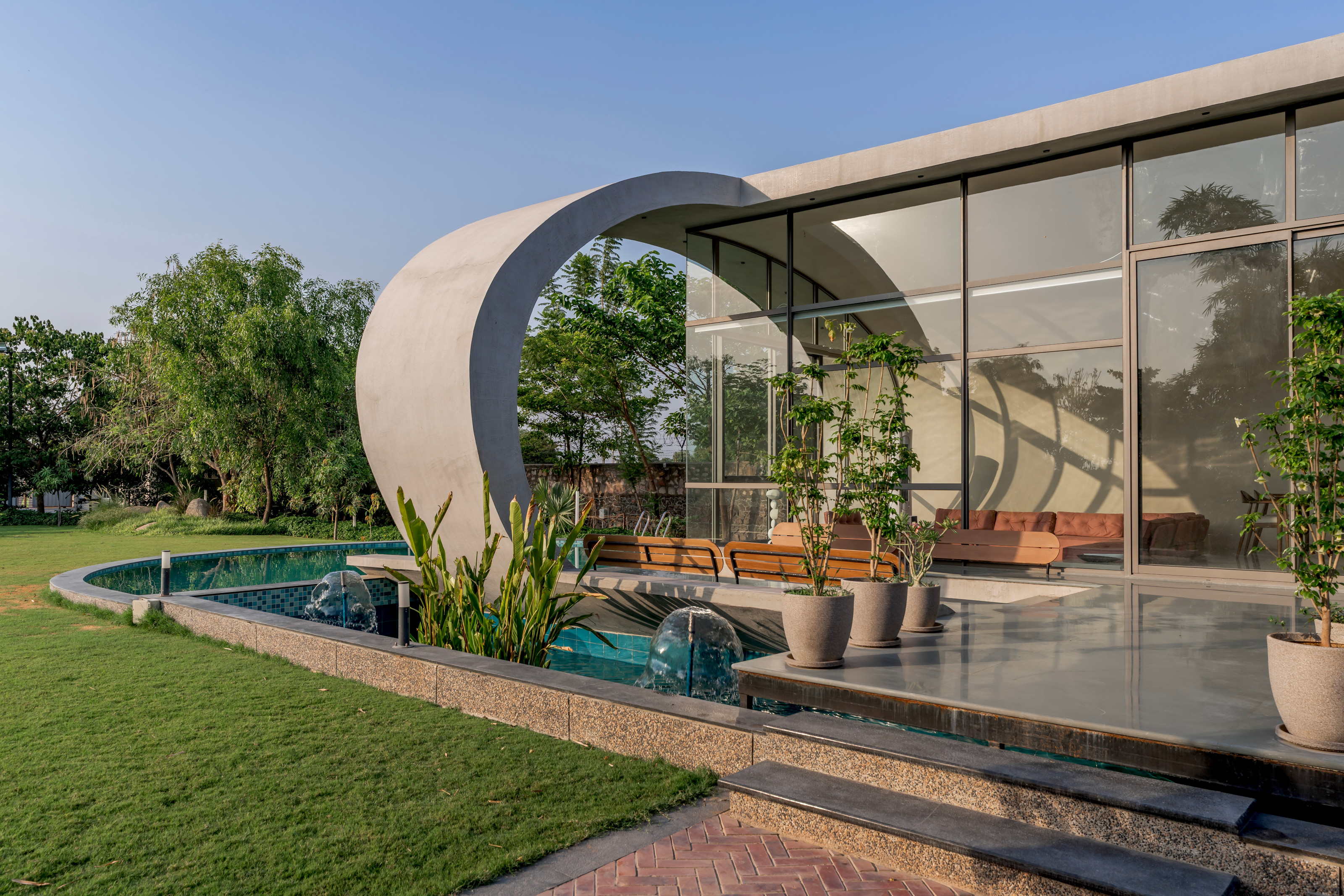
A view of the main house and integral terrace
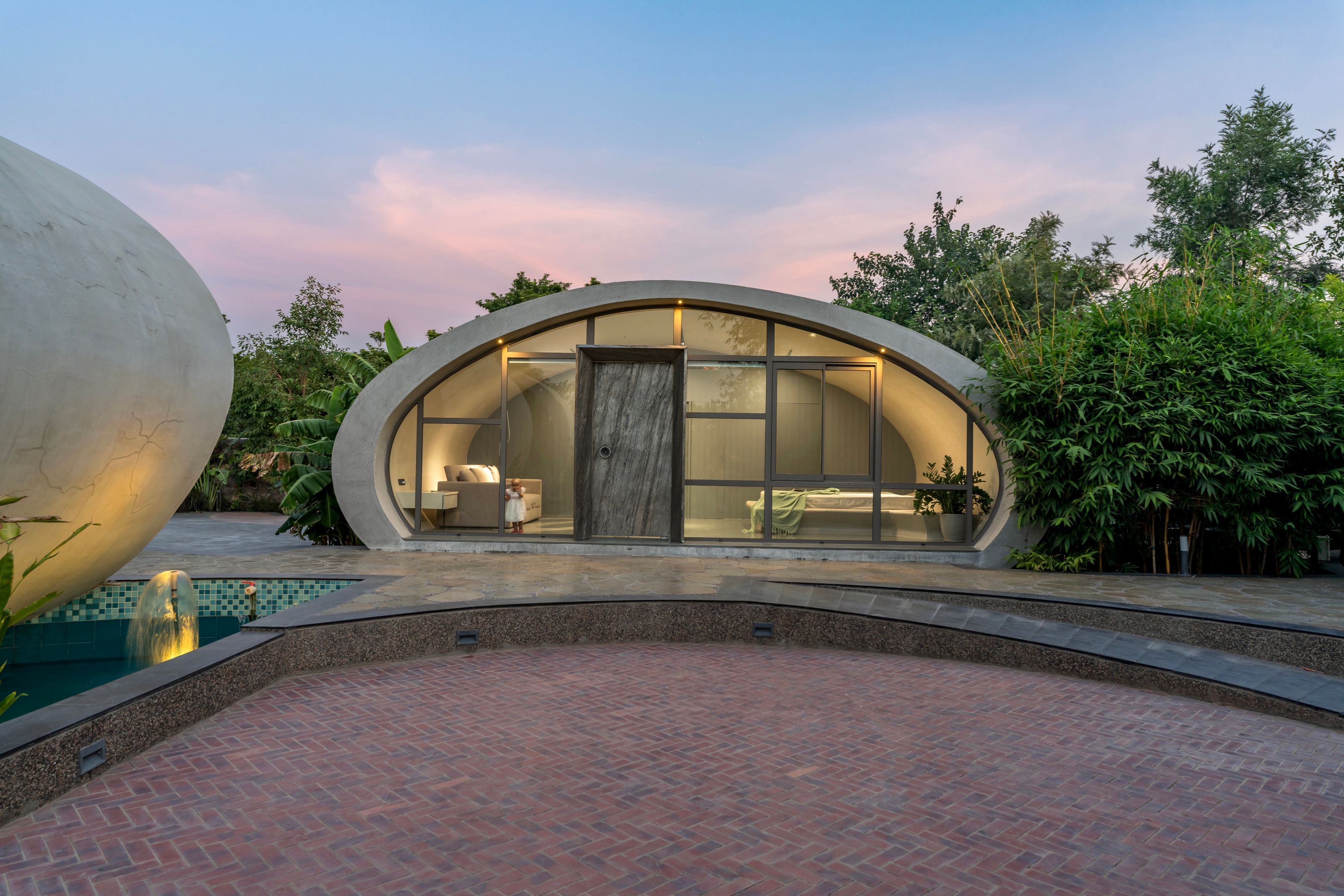
The bedrooms are housed in a small concrete structure alongside the main living areas
The larger of the two oval concrete tubes is also sliced and segmented, creating notches serve as courtyards and windows, as well as a corridor leading past the reflecting pool to the main swimming pool. An arc of concrete completes the oval and frames the garden.

Beds and benches are also formed from concrete
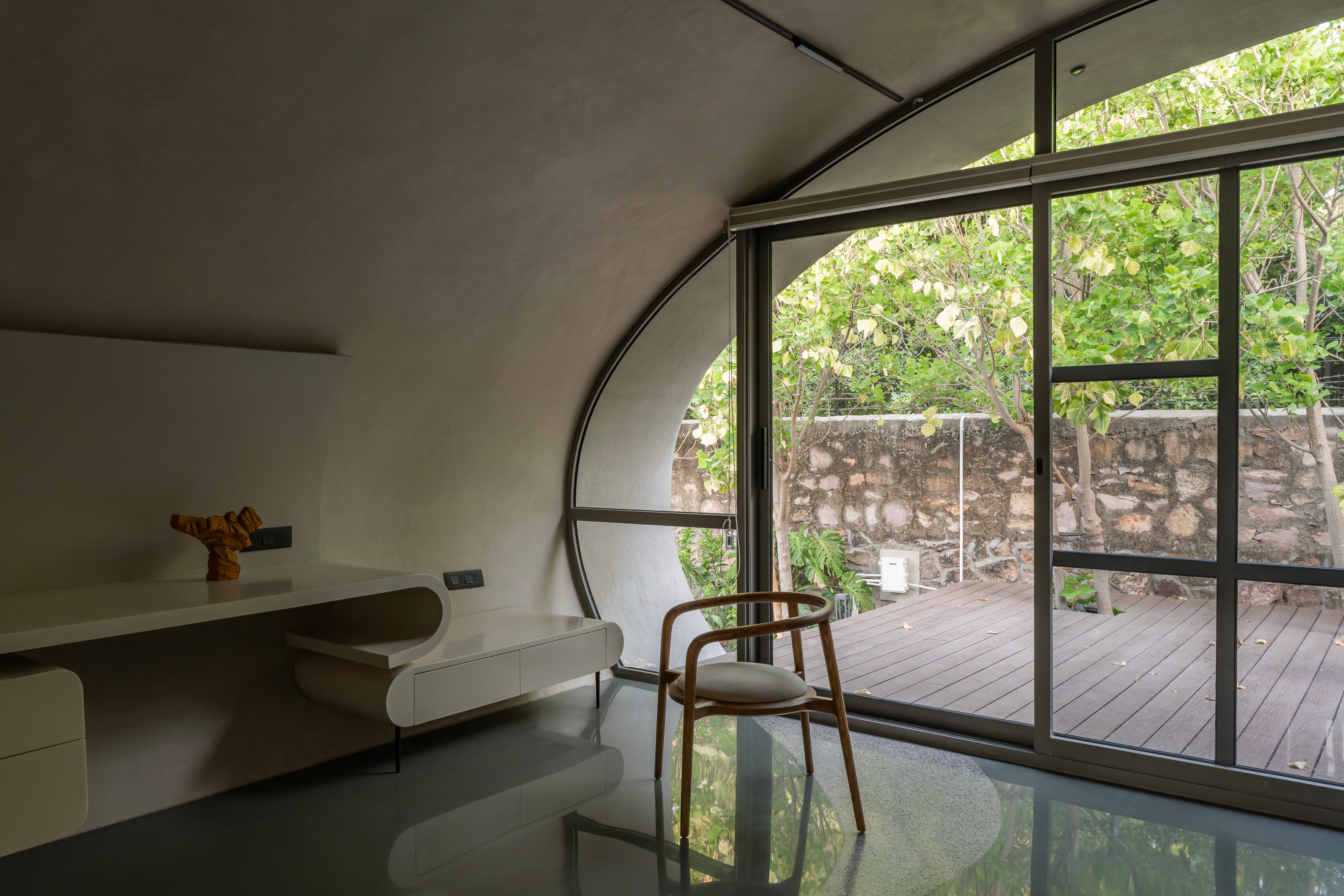
View of a bedroom suite at the Carapace House
At the other end of this structure lies the kitchen and dining area, with its own secluded courtyard, alongside a separate family area. The use of concrete has been extended from structural elements to fixtures and fittings, with integral seating and benches inside and out, as well as the two beds and their side tables in the sleeping structure. There’s more than a hint of Niemeyer in the reliance on fluid concrete forms, juxtaposed with big leaf planting and sinuous patterns and tiles.
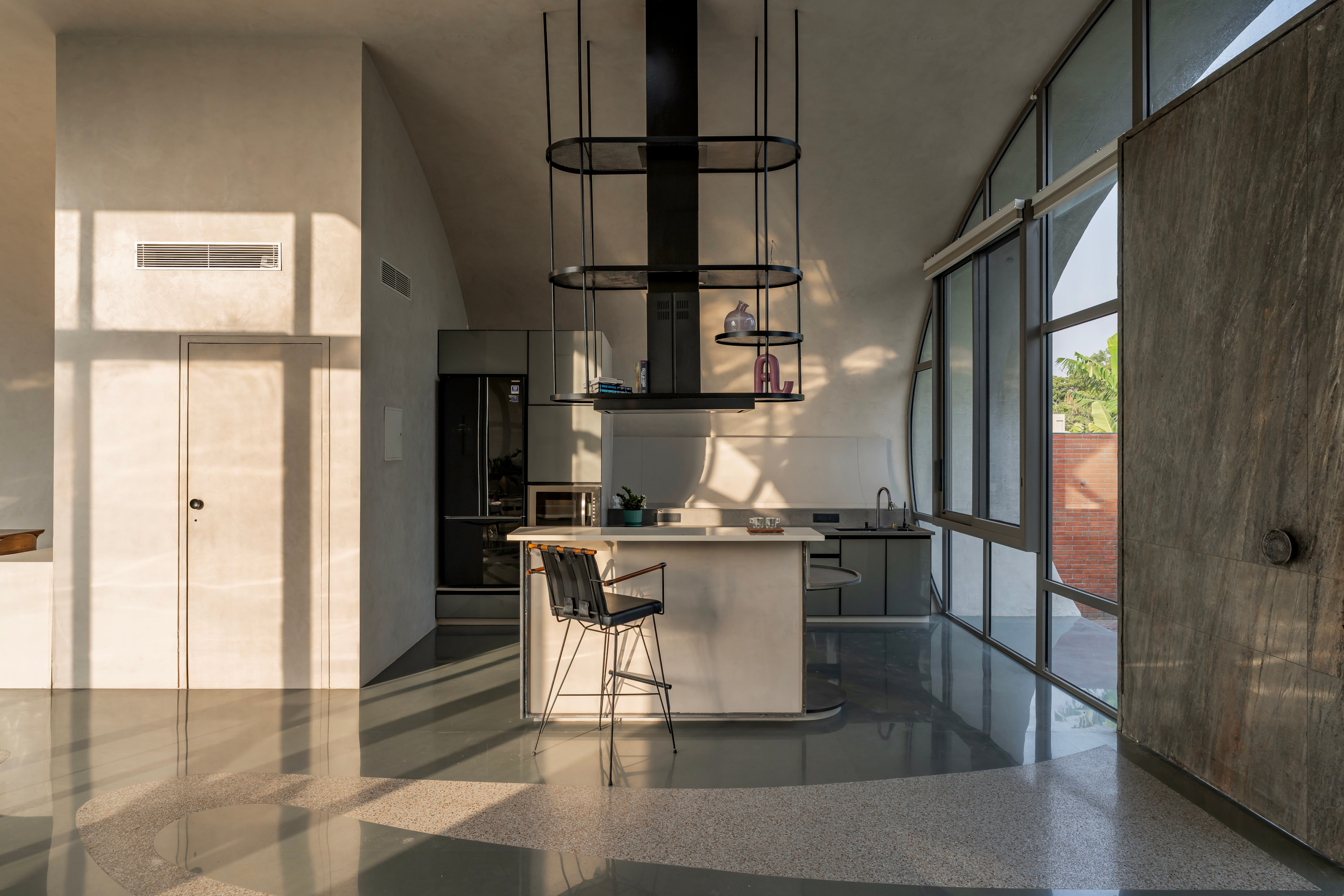
The kitchen in the main house
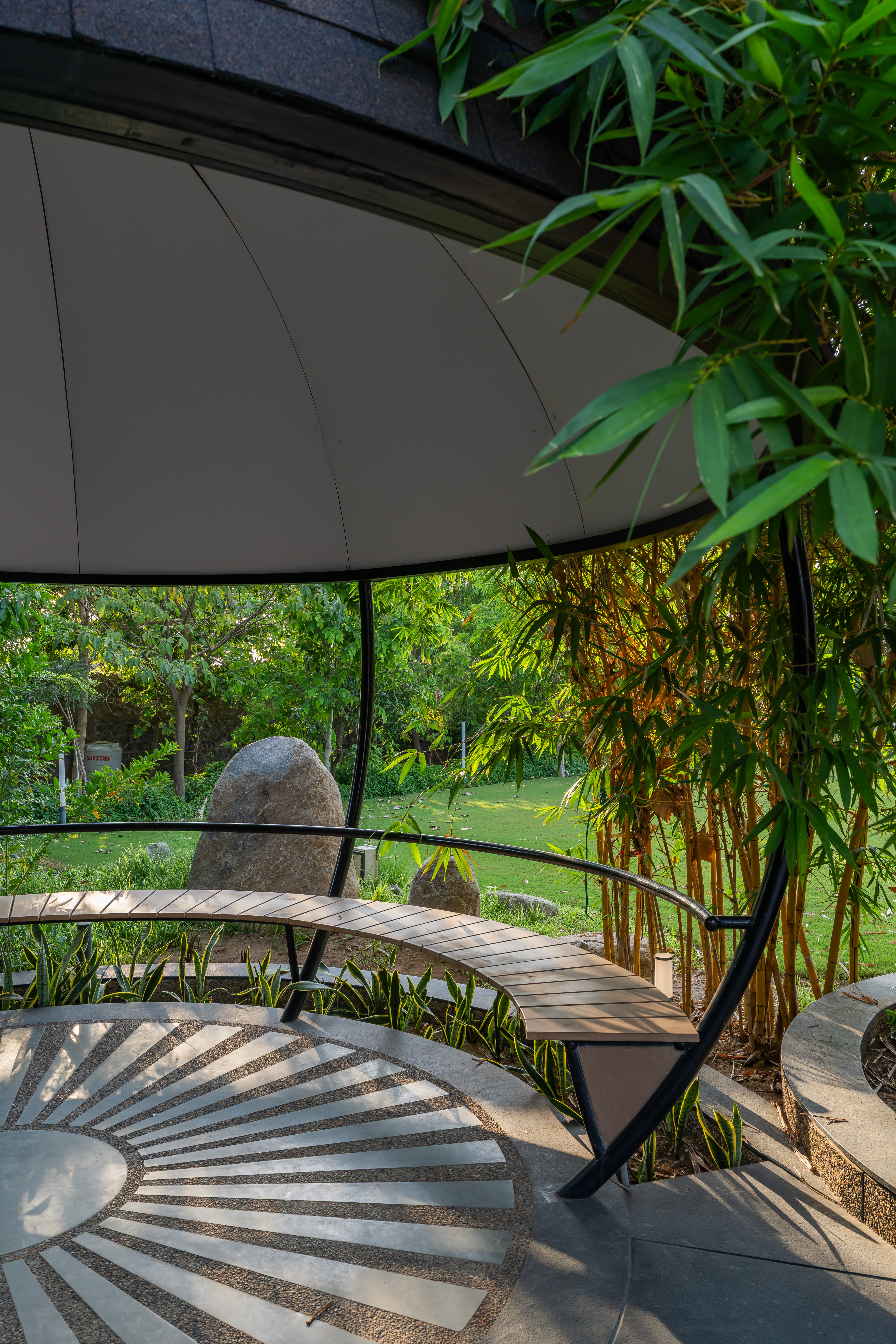
The garden contains a circular gazebo, also designed by the architects
Throughout the garden, the architects have created niches and courtyards, with a separate circular gazebo connected via ramps and walkways, as well as kitchen garden and barbecue area. The periphery is marked with a winding path through fruit trees that helps weave the site together, whether it’s geometric concrete, new planting, or a reflective spot in the heart of nature.

Carapace House, Ahmedabad, by Achyutam Designs
Receive our daily digest of inspiration, escapism and design stories from around the world direct to your inbox.
Jonathan Bell has written for Wallpaper* magazine since 1999, covering everything from architecture and transport design to books, tech and graphic design. He is now the magazine’s Transport and Technology Editor. Jonathan has written and edited 15 books, including Concept Car Design, 21st Century House, and The New Modern House. He is also the host of Wallpaper’s first podcast.
-
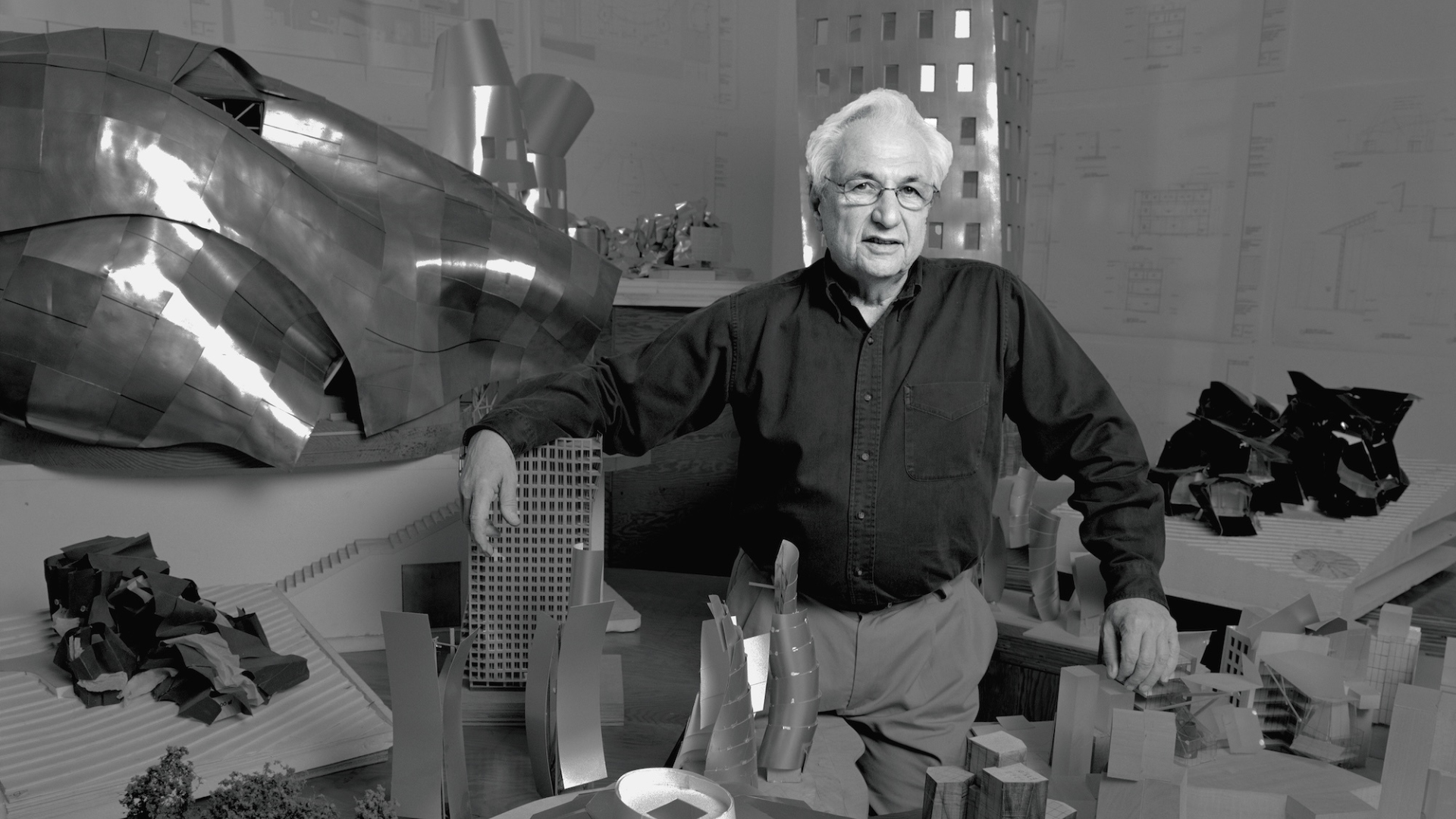 Remembering Frank Gehry, a titan of architecture and a brilliant human being
Remembering Frank Gehry, a titan of architecture and a brilliant human beingLong-time Wallpaper* contributor Michael Webb reflects on the legacy of the Los Angeles architect, who died today at age 96
-
 Lexus finally confirms the name of its all-electric LFA Concept supercar
Lexus finally confirms the name of its all-electric LFA Concept supercarStill designated a design study, the Lexus LFA Concept should be the successor to the most unlikely of all 20th-century supercars
-
 King of cashmere Brunello Cucinelli on his new biographical docu-drama: ‘This is my testimony’
King of cashmere Brunello Cucinelli on his new biographical docu-drama: ‘This is my testimony’Directed by Cinema Paradiso’s Giuseppe Tornatore, ‘Brunello: the Gracious Visionary’ premiered in cinematic fashion at Rome’s Cinecittà studios last night, charting the meteoric rise of the deep-thinking Italian designer
-
 The Architecture Edit: Wallpaper’s houses of the month
The Architecture Edit: Wallpaper’s houses of the monthFrom wineries-turned-music studios to fire-resistant holiday homes, these are the properties that have most impressed the Wallpaper* editors this month
-
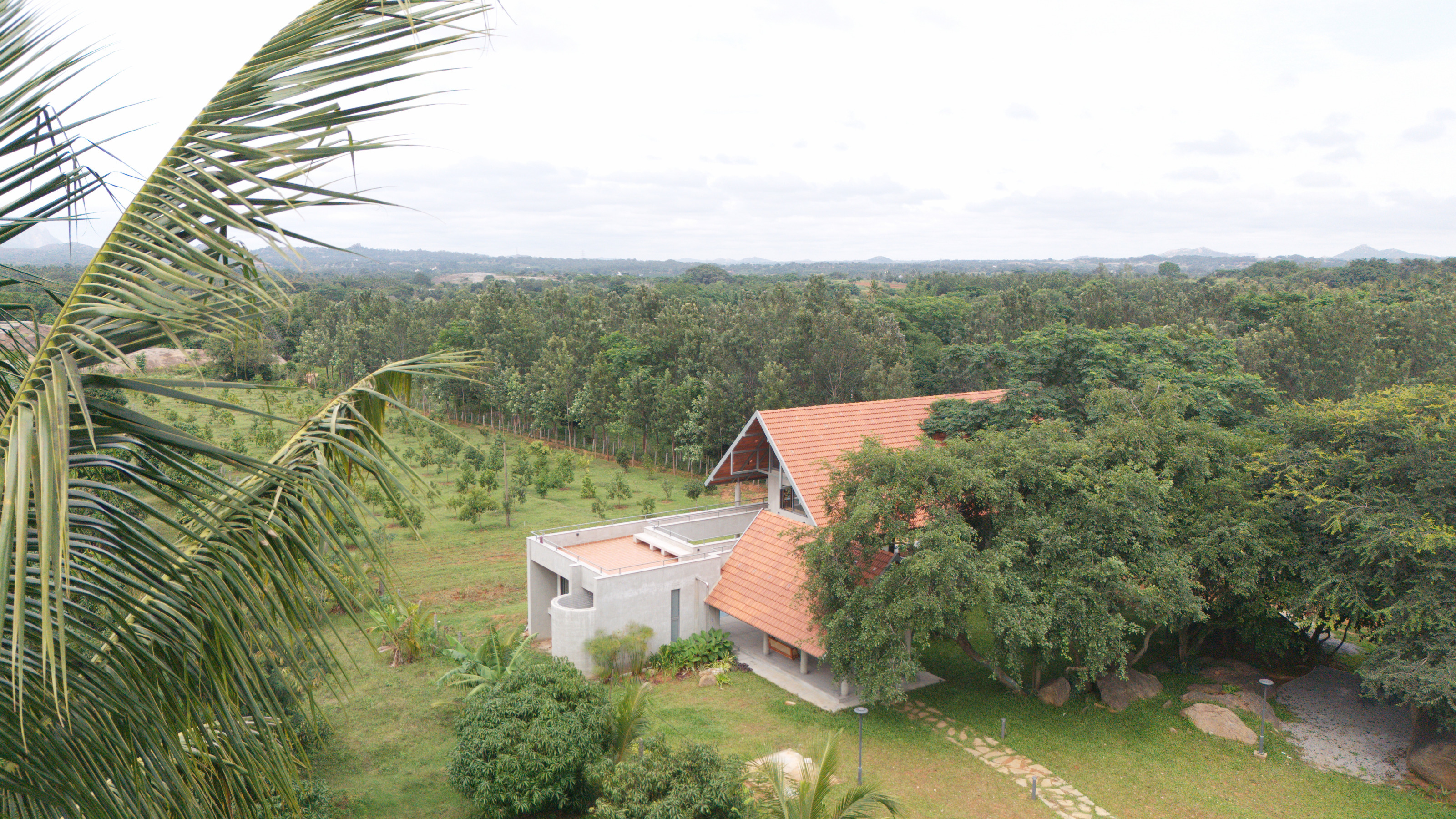 A refined Indian country residence reimagines the farmhouse
A refined Indian country residence reimagines the farmhouseSet among Karnataka’s rolling fields and forest, House by the Grove by Taliesyn Design & Architecture combines modern materials with an open approach to the elements
-
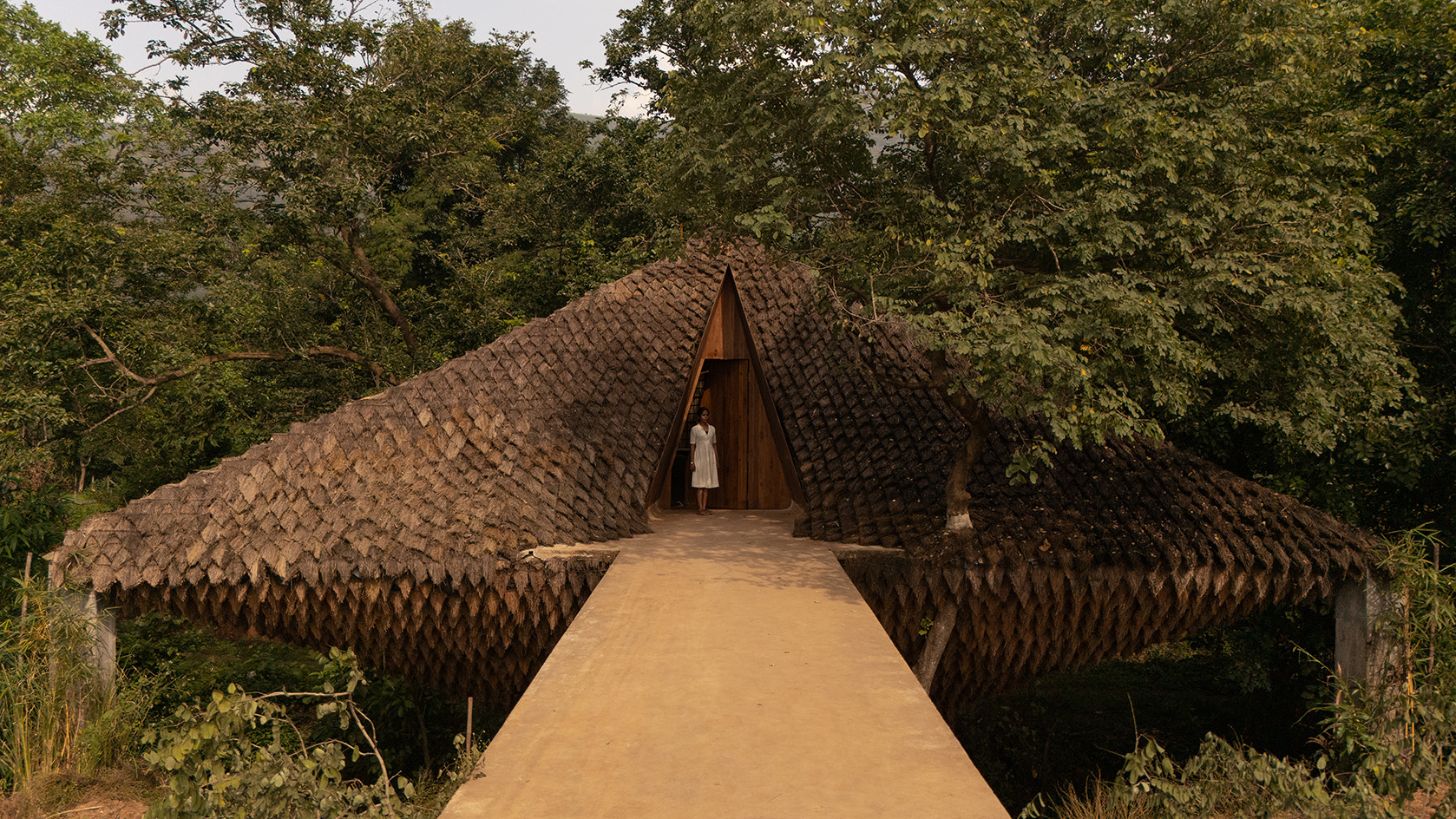 Half bridge, half home: Wallmakers’ latest project takes architecture to daring new heights
Half bridge, half home: Wallmakers’ latest project takes architecture to daring new heightsHovering above a forest stream in Maharashtra, Bridge House in Maharashtra, India pushes the limits of engineering and eco-conscious design
-
 The Architecture Edit: Wallpaper’s houses of the month
The Architecture Edit: Wallpaper’s houses of the monthFrom Malibu beach pads to cosy cabins blanketed in snow, Wallpaper* has featured some incredible homes this month. We profile our favourites below
-
 Cascading greenery softens the brutalist façade of this Hyderabad home
Cascading greenery softens the brutalist façade of this Hyderabad homeThe monolithic shell of this home evokes a familiar brutalist narrative, but designer 23 Degrees Design Shift softens the aesthetic by shrouding Antriya in lush planting
-
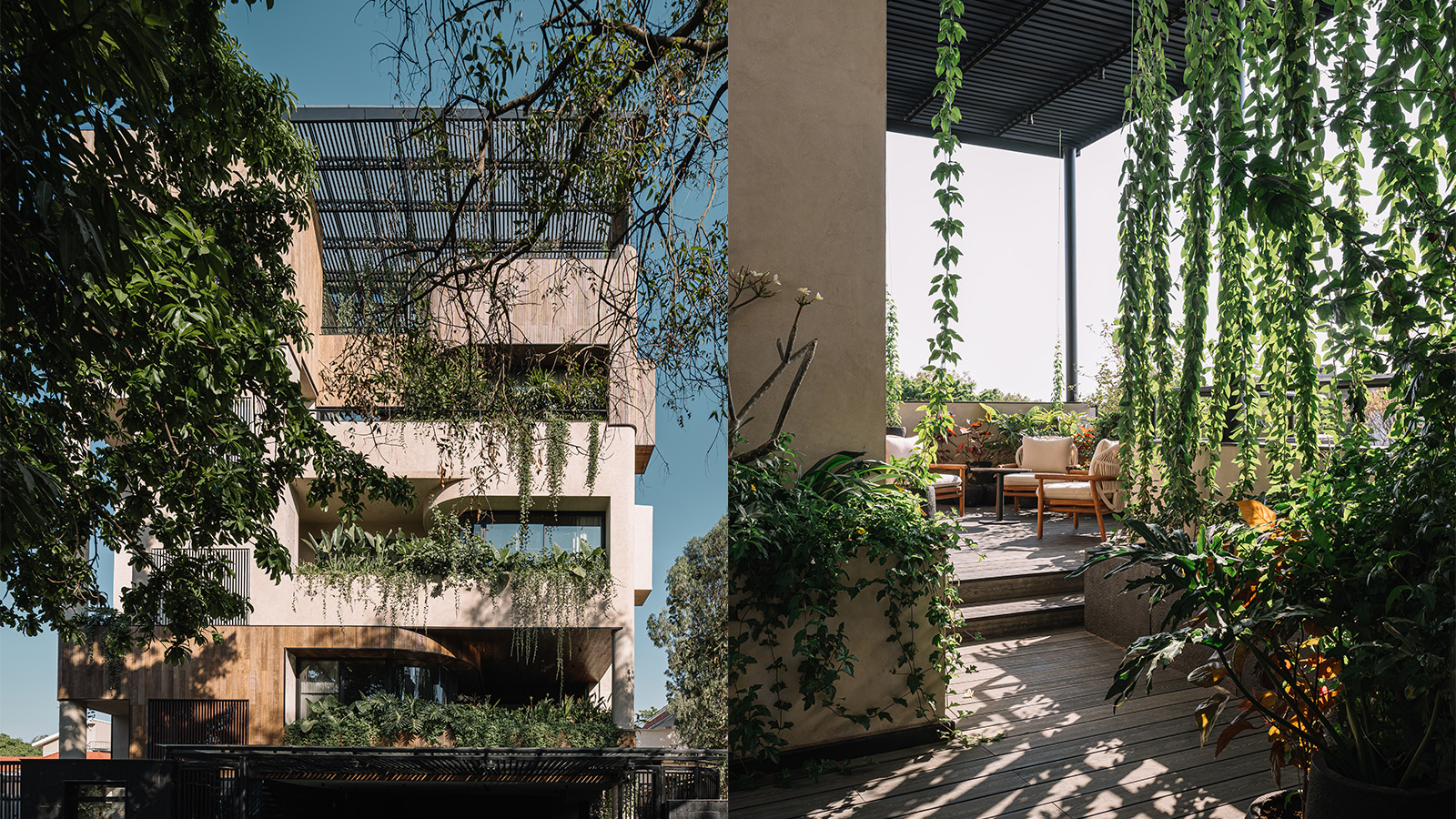 A lush Bengaluru villa is a home that acts as a vessel for nature
A lush Bengaluru villa is a home that acts as a vessel for natureWith this new Bengaluru villa, Purple Ink Studio wanted gardens tucked into the fabric of the home within this urban residence in India's 'Garden City'
-
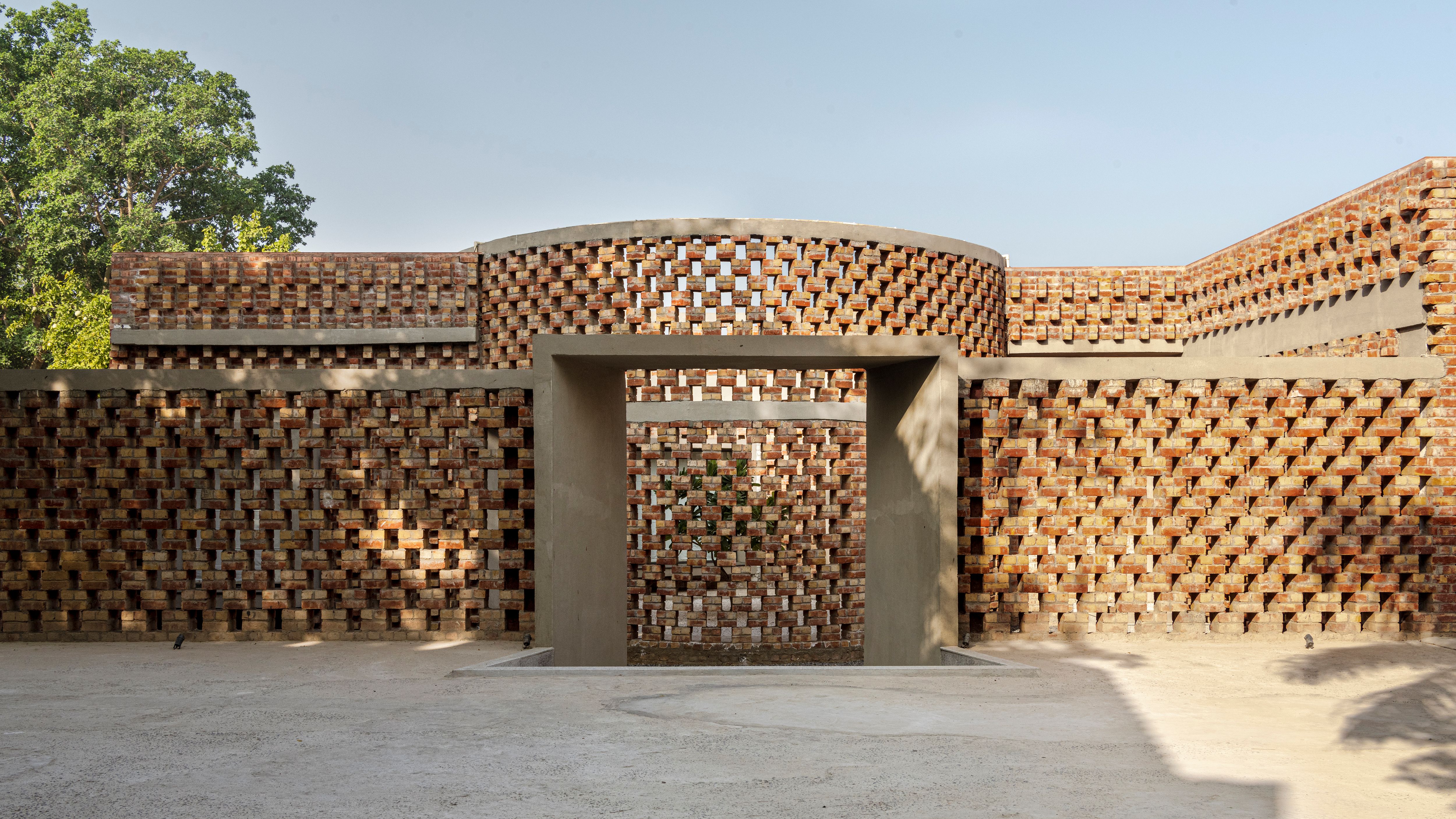 Brick by brick, a New Delhi home honours India’s craft traditions
Brick by brick, a New Delhi home honours India’s craft traditionsRLDA Studio's Brick House works with the building block's expressive potential to create a dynamic residence with a façade that reveals patterns that change with the sun and shadows
-
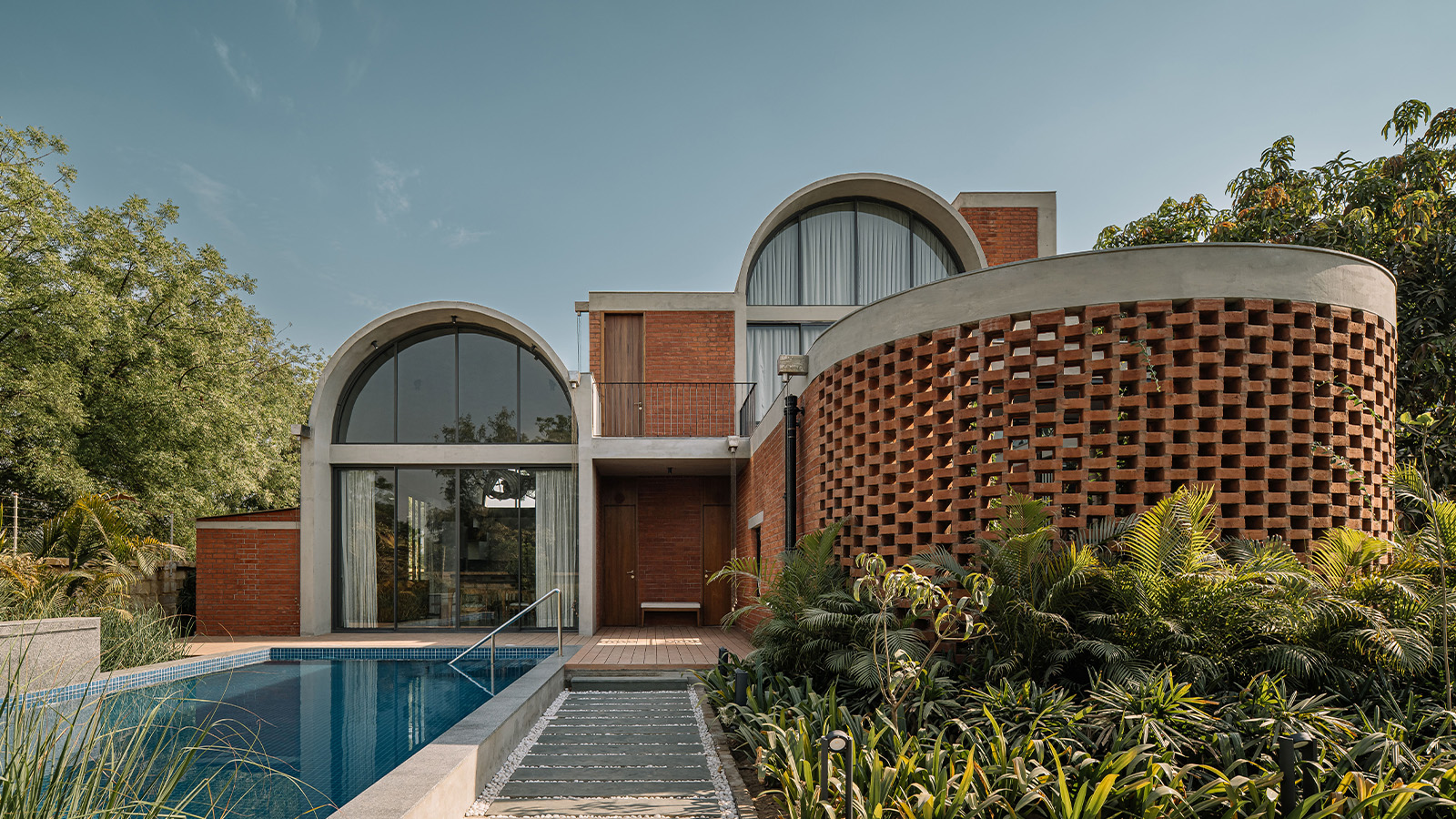 Surrounded by mango trees and frangipani, an Ahmedabad home is a soothing sanctuary
Surrounded by mango trees and frangipani, an Ahmedabad home is a soothing sanctuaryAhmedabad home Teen Vaults, designed by Vaissnavi Shukl, is a family residence grounded in materiality and bold architectural language